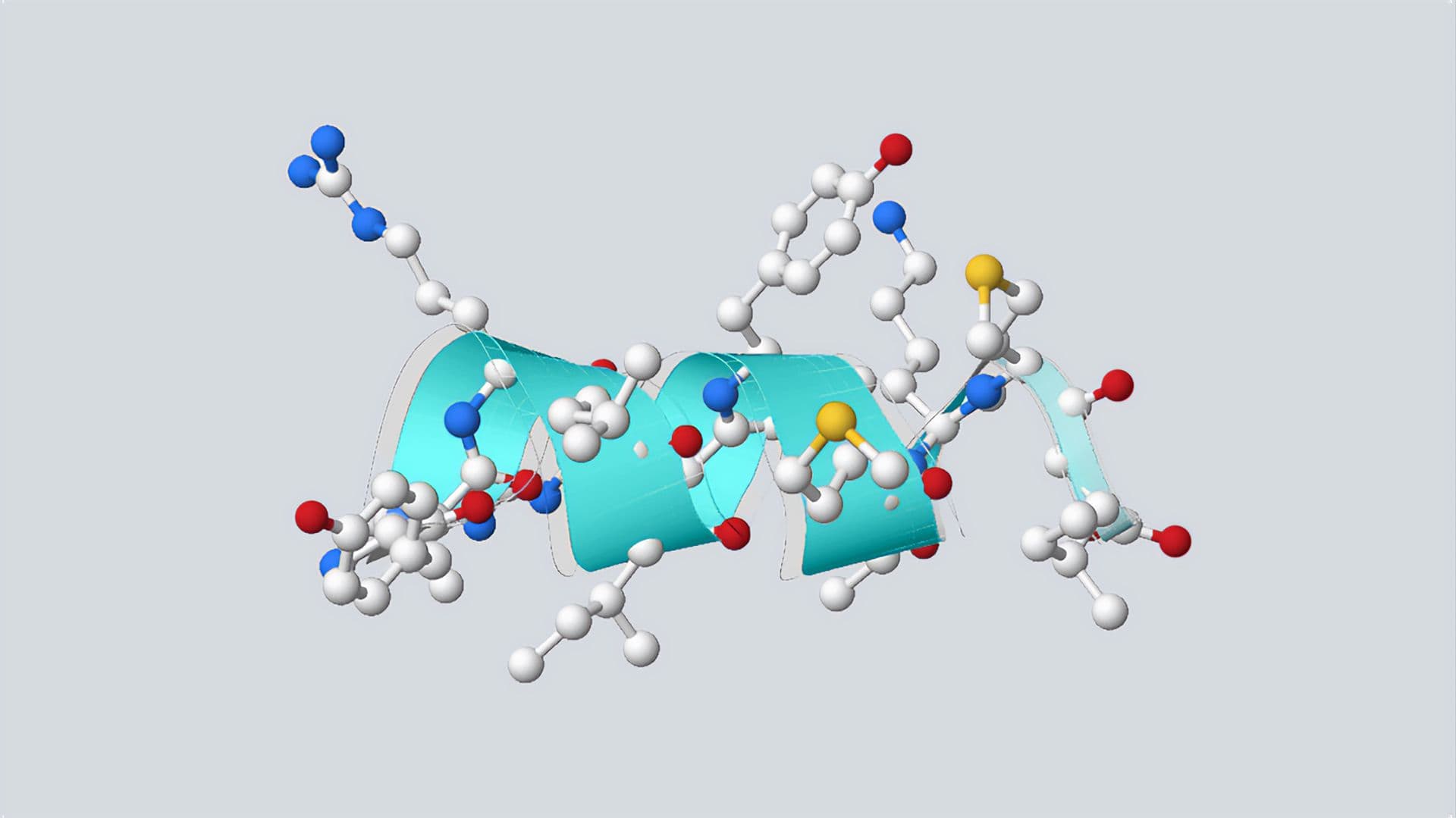IBM AI finds new peptides – paving the way to better drug design
Paving the way to the era of Accelerated Discovery, our team has developed an AI system to help speed up the design of molecules for novel antibiotics.
Antibiotic resistance is no joke. It’s a huge threat to human health — even more so during the raging pandemic. We need new antibiotics, and we need them fast.
In the US alone, nearly three million people get infected with antibiotic-resistant bacteria or fungi every year. But very few new antibiotics are being developed to replace those that no longer work. That’s because drug design is an extremely difficult and lengthy process — there are more possible chemical combinations of a new molecule than there are atoms in the Universe.
We want to help.
Paving the way to the era of Accelerated Discovery, our IBM Research team has developed an AI system that can help speed up the design of molecules for novel antibiotics. And it works — in “Accelerating Antimicrobial Discovery with Controllable Deep Generative Models and Molecular Dynamics,” published in Nature Biomedical Engineering,1 we outline how we used it to create two new non-toxic antimicrobial peptides (AMPs) with strong broad-spectrum potency. Peptides are small molecules — they are short strings of amino acids, the building blocks of proteins. Our approach outperforms other leading de novo AMP design methods by nearly 10 percent.
Beyond antibiotics, this generative AI system could potentially accelerate the design process of the best possible molecules for new drugs and materials — helping scientists to use AI to discover and design better candidates for more effective drugs and therapies for diseases, materials to absorb and capture carbon to help fight climate change, materials for more intelligent energy production and storage, and much more. To fight these challenges, we need to accelerate the rate of discovery of new and functional molecules — at scale.
Where is that molecule?
That’s far from easy. Zeroing in on the correct molecular configuration that would lead to a new material with desired properties among the astronomical number of possible molecules is like looking for a needle in a haystack. For peptides, one would typically have to experimentally screen more than a hundred molecules to find one with the right properties.
So we’ve turned to AI for help.
First, we used an AI generative model dubbed a deep generative autoencoder to learn about the vast space of known peptide molecules. The model captured meaningful information such as molecular similarity and function about diverse peptide sequences, enabling us to explore beyond known antimicrobial templates.
We then applied Controlled Latent attribute Space Sampling (CLaSS) — a recently developed computational method for generating novel peptide molecules with custom properties. It works by sampling from the informative latent space of peptides and relies on a rejection sampling scheme guided by the molecular property the classifier trained on during the latent representation. Since CLaSS performs attribute-conditioned sampling in the compressed latent space, it is a computationally efficient and scalable approach that can be easily repurposed.
We then used deep learning classifiers to screen the AI-generated candidate antimicrobial molecules for additional key attributes, such as toxicity and broad-spectrum activity. We performed additional screening with the help of high-throughput, coarse-grained molecular dynamics simulations. These simulations look for presence of novel physicochemical features indicative of stable and peptide-membrane binding, such as low-contact variance between peptide and membrane.
Within 48 days, our AI-boosted molecular design approach to Accelerated Discovery enabled us to identify, synthesize, and experimentally test 20 AI-generated novel candidate antimicrobial peptides. Two of them turned out to be highly potent against diverse Gram-positive and Gram-negative pathogens (including multidrug-resistant K. pneumoniae) and very unlikely to trigger drug resistance in E. coli.
We also didn’t find any cross-resistance for either of the AMPs when tested using a polymyxin-resistant strain. Live-cell confocal imaging showed the formation of membrane pores as the underlying mechanism of bactericidal mode of action of these peptides. Both antimicrobials have low toxicity — we tested them in vitro and also in mice, providing important information about the safety, toxicity and efficacy of these antimicrobial candidates in a complex animal model.
Our proposed approach could potentially lead to faster and more efficient discovery of potent and selective broad-spectrum antimicrobials to keep antibiotic-resistant bacteria at bay — for good. And we hope that our AI could also be used to help address the world’s other most difficult discovery challenges, such as designing new therapeutics, environmentally friendly and sustainable photoresists, new catalysts for more efficient carbon capture, and so much more.
References
-
Das, P., Sercu, T., Wadhawan, K. et al. Accelerated antimicrobial discovery via deep generative models and molecular dynamics simulations. Nature Biomedical Engineering (2021). ↩
Related posts
- Deep DiveJuan Bernabé-Moreno
Boost your agents: Introducing ALTK, the open-source agent lifecycle toolkit
Technical noteKiran Kate, Jim Laredo, Vinod Muthusamy, Jason Tsay, Yara Rizk, and Zidane WrightAn artist’s tribute to modern AI
Q & AKim MartineauExpanding AI model training and inference for the open-source community
NewsPeter Hess
